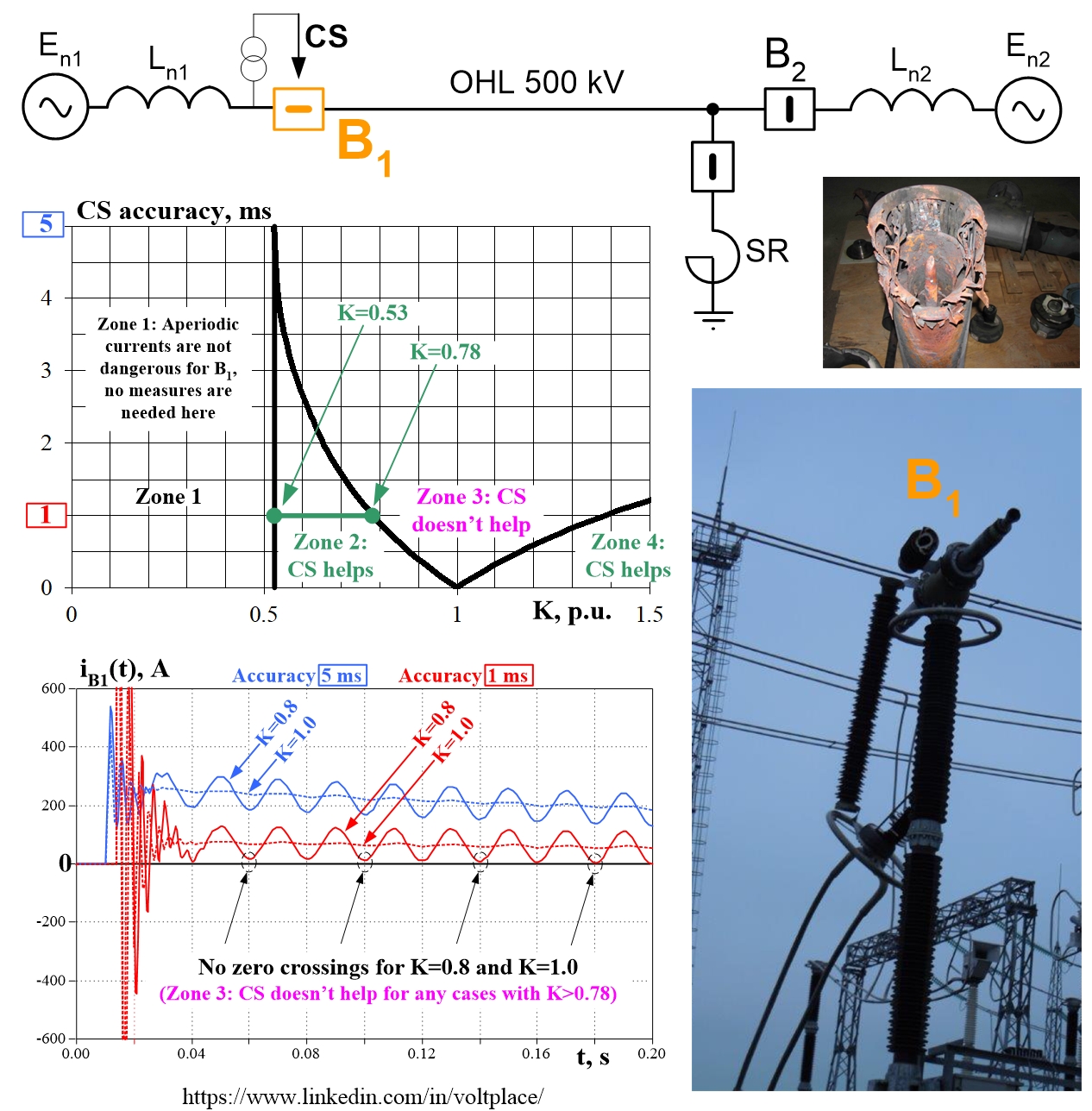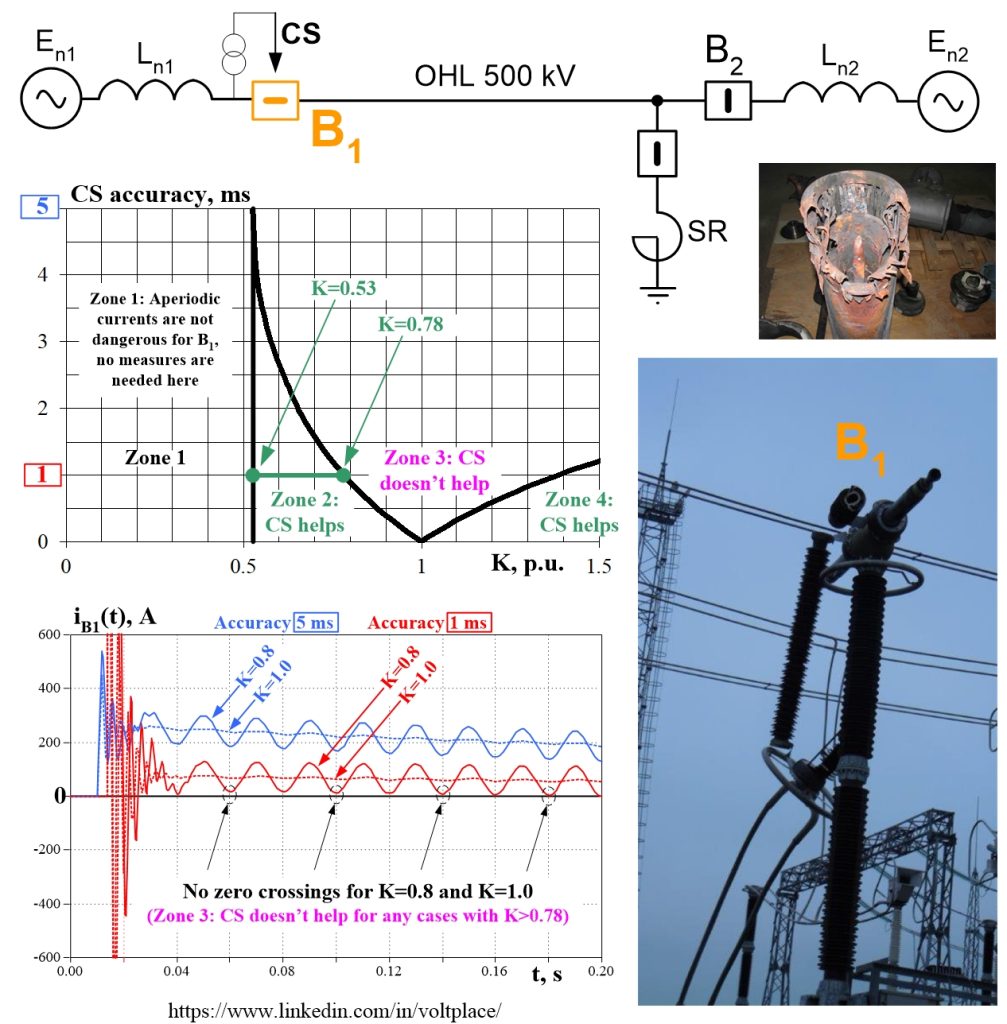
Breaker vs Reactor (part 2)
The previous post was about the reasons why switching lines with shunt reactors (SR) can cause damage of the line breaker B1. Theoretically, several options can be proposed to solve the problem. Let’s start with controlled switching devices (CS, see scheme).

CS can be used only in cases when each phase of the breaker has its own independent drive (this is typical for 220-800 kV). When circuit breaker receive a command to turn on (off), the process of moving of contacts begins with a certain time delay. This delay is determined for each phase by the CS in such a way as to reduce one of the following:
1️⃣ Switching overvoltages when energizing a line (or equipment).
2️⃣ Switching overvoltages when disconnecting a line (or equipment).
3️⃣ Magnetization currents when energizing a transformer.
4️⃣ Aperiodic currents when energizing a reactor (or a line with a reactor).
For example, to solve No.1, it is necessary that at the moment of breakdown between the closing contacts of the breaker, the sinusoidal voltage of the network should be close to zero. To solve No.4, on the contrary, it is necessary that the specified voltage should be close to its amplitude. Thus, on lines with reactors, CS cannot solve issues No.1 and No.4 simultaneously. Therefore, let’s focus on solving No.4, and to solve No.1, it is enough to have surge arresters at the ends of the line.
Unfortunately, CS devices have limited accuracy. The typical accuracy is 2 ms, but it is possible to achieve 1 ms. Hence, the energizing of the line with the reactor for No.4 will not occur at the amplitude of the sinusoidal network voltage, but 1-2 ms earlier/later than this moment.
Even if the accuracy is high (1 ms), CS will be able to solve the problem of aperiodic currents only for lines with a compensation coefficient in the range of 0.53<K<0.78 (green Zone 2 on the graph). For lines with K>0.78 (Zone 3 on the graph), the accuracy of CS is not enough, and therefore the aperiodic component will be dangerous (the circuit breaker B1 has no zeros of the current, please see the red curves on the oscillogram presented from below).
When designing lines with reactors, there is “a rule” to have no less than 80% compensation. Thus, the value of K>0.8 is very common, and this means that with the existing CS accuracy (about 1 ms), CS device is useless to combat aperiodic currents. For more information please read PDF.
So, in case of K>0.8, controlled switching will not protect breaker B1 from the risks associated with aperiodic. In other words, in case of K>0.8, if you need to turn B1 off promptly after turning it on, then B1 will be damaged (due to the inability to turn off the current, which does not have transitions through the zero value).
Fortunately, we have alternative ways to protect B1 – for example, pre-connected resistors, etc. I’ll share my thoughts on this in my next post or please read another PDF.
